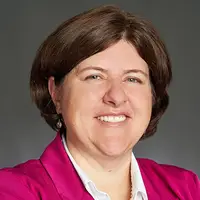I watched the health worker gently wash the swollen leg of a woman from northern Ethiopia. Stigmatized because of her severe lymphedema, she had fled her home and was now hundreds of miles away in Adama, central Ethiopia, and had been begging on the streets to survive. At first, the woman was withdrawn and only looked down. As the health worker washed her leg she began smiling, making eye contact with the health worker and trying to communicate, although the two women did not speak the same language.
I immediately thought of the Christian Bible passage just before the Last Supper, when Jesus began washing the feet of his disciples. The meaning of foot washing is layered. It can be a sign of hospitality: where roads are dusty, and feet are not well protected, the washing is soothing after a long journey. Washing another’s feet is considered an act and symbol of humility and service. Pope Francis regularly washes the feet of the migrants, refugees, and prisoners he meets. It can also be an act of ritual purification: an ancient practice, foot washing is a part of the ablutions worshippers in many faiths perform before praying even today.
In this case, the washing exercise was part of a lymphedema management training for clinical health workers in Adama. The training was supported by the U.S. Agency for International Development’s (USAID’s) Morbidity Management and Disability Prevention (MMDP) Project, managed by Helen Keller International and implemented in Ethiopia by RTI International. Through the MMDP Project, RTI provides high-quality treatment and care for people suffering from the debilitating effects of trachoma and lymphatic filariasis in Ethiopia.
As part of the training, the project provided care to several persons with lymphedema while enabling trainees to practice the skills they were learning. These cases of lymphedema were developed from lymphatic filariasis, a neglected tropical disease (NTD) spread by mosquitoes transmitting microscopic worms that make their way into the lymph system. In the lymph vessels, these worms grow into adults and destroy the lymph vessels, leading to swelling in the limbs, breasts, and genitalia (a condition called hydrocele). This swelling worsens as a result of acute attacks—painful and debilitating episodes of local inflammation, often from secondary bacterial infections.
For this woman, and the many others suffering from lymphedema due to lymphatic filariasis, there is no cure. The only measures are hygiene to prevent acute attacks and additional swelling, analgesics to relieve pain, and antibiotics to treat infection. Since lymphedema often causes the skin to fold over itself, general bathing is not enough, and it is important for patients to wash their limbs in a specific manner, ensuring that all surface areas are washed and dried, and apply emollients to protect the skin.
In addition, those persons living with lymphedema are often unable to work because of the size of their limbs or the intense and sometimes frequent pain of the acute attacks. They are also often stigmatized by their communities, like the woman in Adama. However, lymphatic filariasis is targeted for worldwide elimination as a public health problem, through the provision of mass drug administration for at least five years with various drugs, and through morbidity management for patients with lymphedema and hydrocele.
Since 2014, we have supported the Ethiopian government’s efforts to control and eliminate these diseases by 2020. In addition to facilitating mass-treatment campaigns through the ENVISION Project, we are helping improve the lives of people affected by the debilitating impacts of NTDs through USAID’s MMDP Project.
As I think back on my experience, I know it is unlikely that either the health worker or the patient was thinking about the symbolism behind the washing. In my mind, however, I think all aspects of this ancient ritual were happening simultaneously. The woman felt better because the water was likely soothing, and she was happy to receive the hospitality, service, and attention of the health worker. In addition, I couldn’t help but think of the ritual purification aspect. For a woman to feel so stigmatized by a disease that she needed to flee her home, eventually, this washing may help her feel able to return to her community.
The images of this woman in Adama have stayed with me, serving as a continuous reminder of the importance of our work in not only ensuring that crucial health services are provided to people, but also dignity and the opportunity for healing. The need for these services is still great. The global goal is the availability of a minimum package of care, including lymphedema management services, to 100 percent of districts with known patients. If such a simple, low-cost treatment can bring such a dramatic change to someone’s demeanor and sense of well-being in less than an hour, those of us working in NTDs have an obligation to ensure this goal is met.

